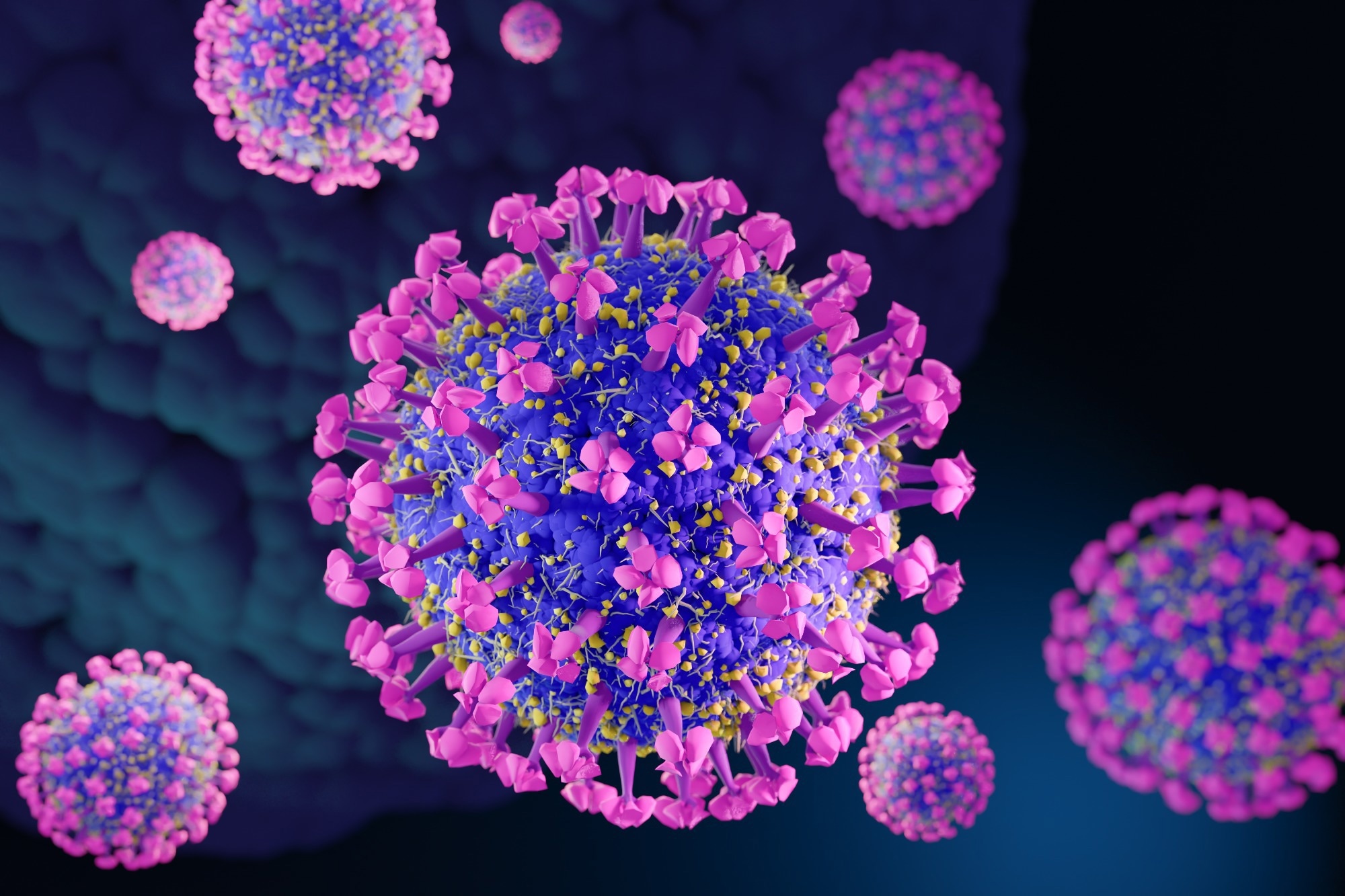In a recent study published in Epidemiology & Infection, researchers investigate the contribution of the severe acute respiratory syndrome coronavirus 2 (SARS-CoV-2) and influenza to hospitalizations and mortality to inform future vaccination and treatment policies.
 Study: Mortality associated with Omicron and influenza infections in France before and during the COVID-19 pandemic. Image Credit: Luca9257 / Shutterstock.com
Study: Mortality associated with Omicron and influenza infections in France before and during the COVID-19 pandemic. Image Credit: Luca9257 / Shutterstock.com
How did the Omicron variant affect France?
The SARS-CoV-2 Omicron variant is associated with a lower risk for severe outcomes than the Delta variant in adults. However, following the emergence of the Omicron variant, France experienced a spike in severe outcomes unrelated to the coronavirus disease (COVID-19) in SARS-CoV-2-positive patients. More specifically, Omicron significantly contributed to mortality from cardiac issues, cancer, and neurological disorders.
Despite the profound impact of influenza infections in France during December 2022, testing and antiviral use remained inconsistent. This is compounded by low influenza vaccination rates in France, especially among healthcare workers in elderly care facilities.
Further research investigating the impact of SARS-CoV-2 and influenza on health outcomes to ultimately guide effective vaccination strategies and healthcare policies, especially for vulnerable populations, is necessary.
About the study
In the present study, researchers utilized aggregate, de-identified public data to investigate the impact of various influenza subtypes and SARS-CoV-2 on mortality rates in metropolitan France. Key datasets included the French sentinel surveillance for influenza-like illness (ILI) consultations, World Health Organization (WHO) FluNET for influenza subtype testing, and electronic records for COVID-19-related deaths.
Importantly, not every ILI consultation translates to an influenza infection, and multiple influenza subtypes can cause ILI. Thus, incidence indicators were established for each influenza subtype and correlated ILI consultation rates with the percentage of specimens positive for that subtype. This methodology is crucial when considering that the age distribution of influenza cases varies with the emergence of antigenically novel strains, thus impacting the relationship between influenza-associated ILI rates and mortality.
During the observation period, several significant antigenic changes were reported. These included the introduction of a new A/H3N2 strain in the 2014-2015 season, a novel B/Yamagata strain in 2017-2018, and diverse A/H3N2 epidemic strains in 2018-2019.
These shifts required the researchers to segment the A/H3N2 incidence indicator into distinct periods and similarly bifurcate the B/Yamagata incidence indicator based on its epidemic emergence. A one to two week delay between influenza illness onset and associated mortality was also considered in the analysis.
For SARS-CoV-2-related deaths, weekly rates of deaths in which COVID-19 was explicitly mentioned on the death certificate was used as an indicator. In the regression model, data was considered from week three in 2015 to week two in 2020, and then from week 33 in 2022 to week 12 in 2023.
Study results
Before the onset of the COVID-19 pandemic, the interplay between baseline mortality rates, trends, and the influence of influenza infections was evident. However, between week 33 in 2022 and week 12 in 2023, the model indicates that SARS-CoV-2 infections accounted for the majority of the heightened mortality.
From the 2014-2015 season to 2018-2019, influenza contributed to an annual average death toll of 15,654 with a 95% confidence interval of 13,013-18,340. In contrast, between week 33 of 2022 and week 12 of 2023, 7,851 influenza-related deaths and 32,607 deaths associated with SARS-CoV-2 were reported.
Between weeks 33-52 of 2022, 23,983 SARS-CoV-2-related deaths were recorded in France. This estimate contrasts with the 12,811 deaths that explicitly listed COVID-19 on the death certificate and 8,639 in-hospital deaths attributed to COVID-19 during that same period.
Discussion
In the winter of 2022-2023, France experienced excess mortality levels comparable to the initial COVID-19 wave in April 2020. This spike was primarily attributed to the emergence of the Omicron variant and concurrent influenza outbreak. Strikingly, many individuals who died from Omicron infection had comorbid conditions other than COVID-19 as the primary cause, which is a trend distinct from earlier SARS-CoV-2 strains.
Death certificates often do not mention influenza as the cause, despite its association with mortality. This necessitates the need for additional research to elucidate the impacts of both viruses, especially among patients with health complications. In 2022 alone, the study recorded higher Omicron-associated deaths than those that explicitly listed COVID-19 on their certificates, with the Omicron strain significantly affecting cardiac and mental health patients.
Pre-pandemic data indicated the enduring presence of influenza, as it was responsible for a significant proportion of deaths each year. However, influenza vaccine uptake in France remains low, especially among non-elderly adults and children, all of whom are pivotal transmitters of the flu.
The elderly, a significant portion of mortality statistics, are further compromised by low vaccination rates among their healthcare providers. Therefore, the need for broader vaccination coverage, for both COVID-19 and influenza, is paramount, along with refining treatment and detection measures.